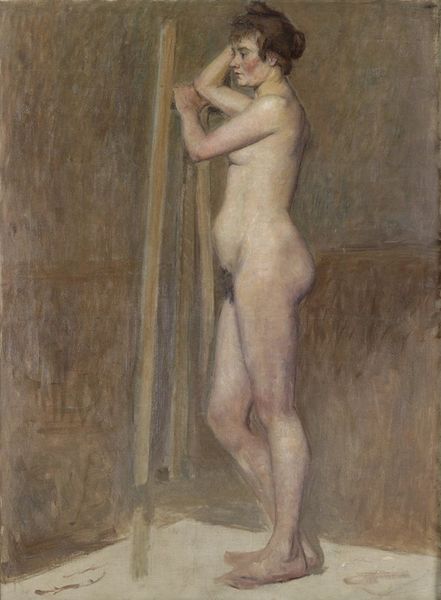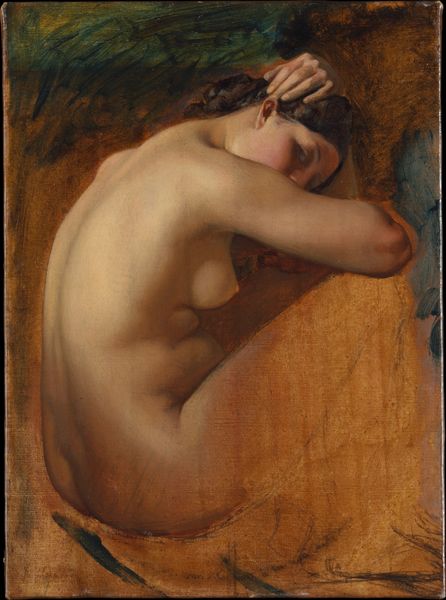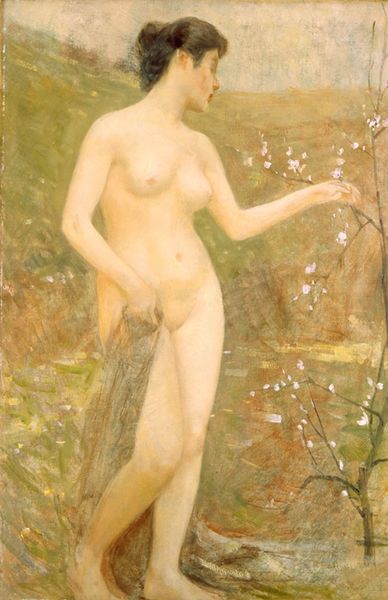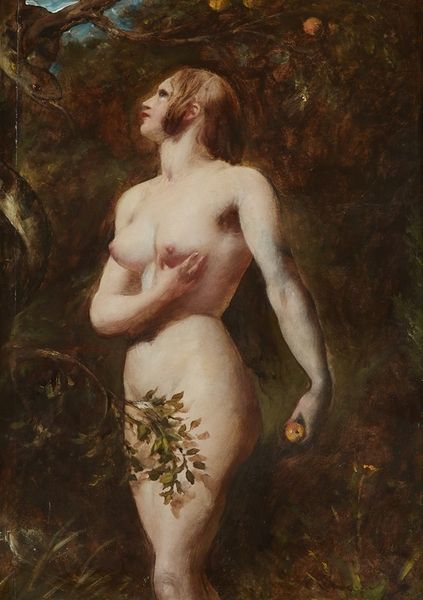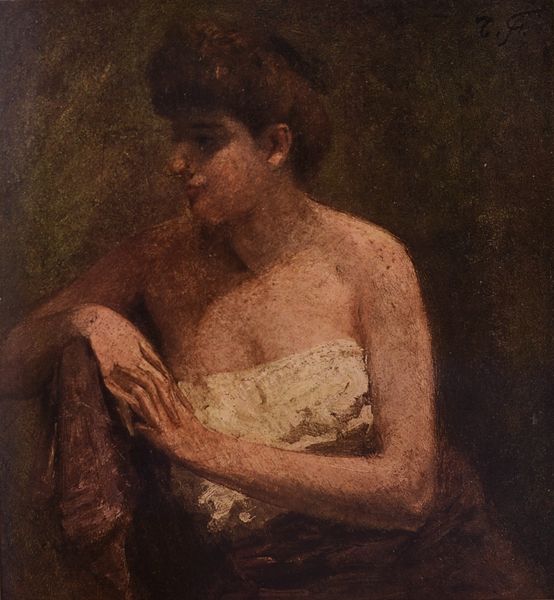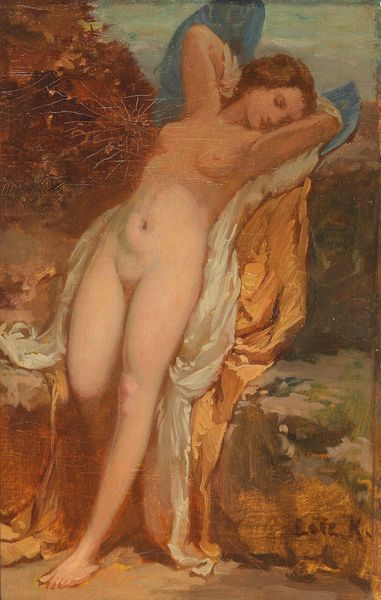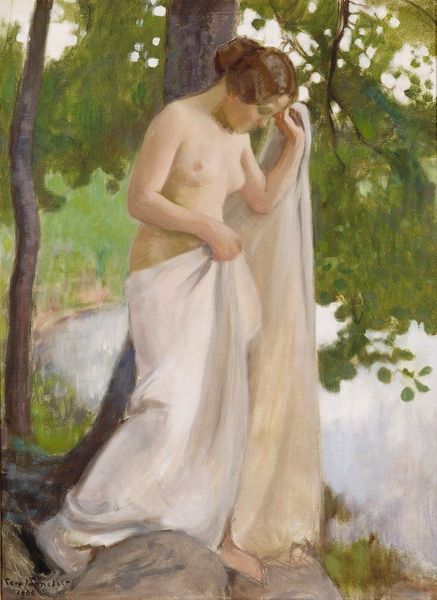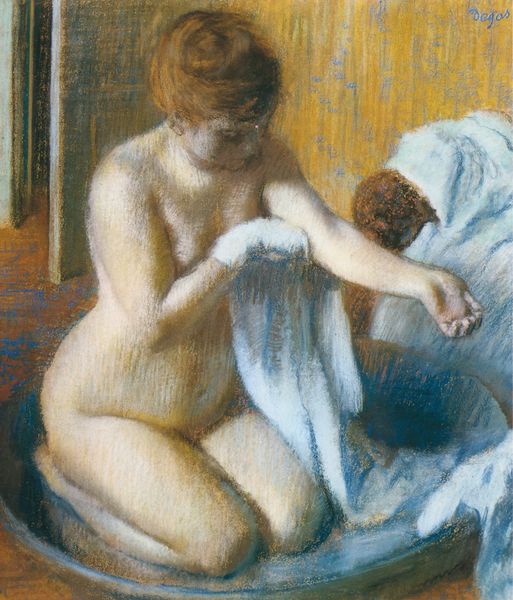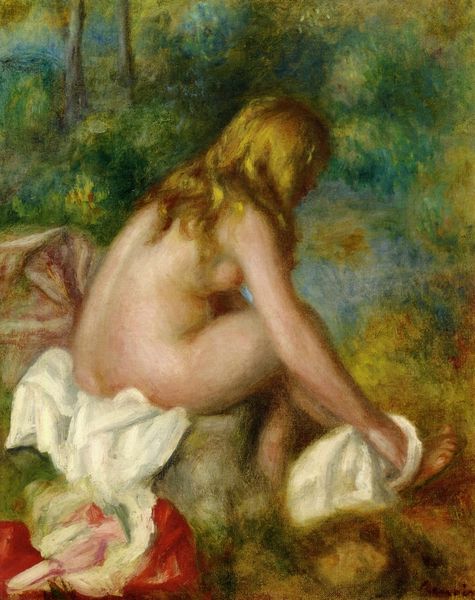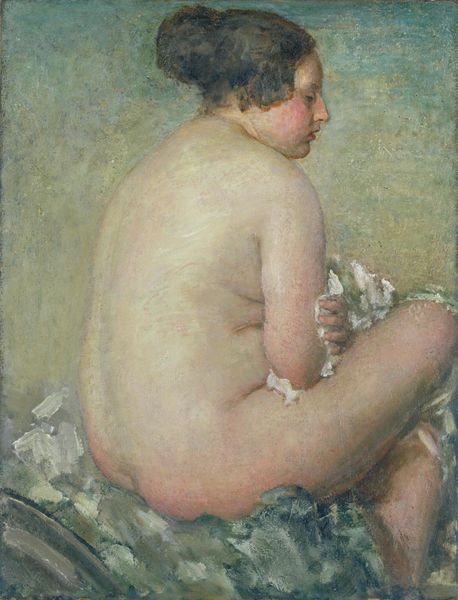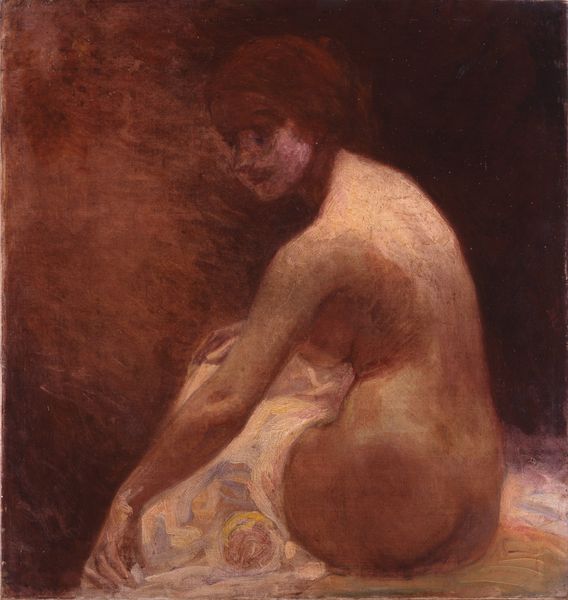
drawing, coloured-pencil, pencil, pastel
#
portrait
#
drawing
#
coloured-pencil
#
pencil
#
symbolism
#
pastel
#
academic-art
#
nude
#
portrait art
Dimensions: 51 3/8 x 30 1/2 in. (130.49 x 77.47 cm) (image)
Copyright: Public Domain
Pierre Puvis de Chavannes created this pastel drawing of a seated woman in the late 19th century. It is made with a humble material – chalk pastels – yet the effect is far from modest. Look closely and you’ll see how the powdery pigment catches the light, creating a soft, almost dreamlike quality. The artist's hand is evident in every stroke, building up layers of color to define the woman's form and the surrounding landscape. This is not the slick surface of an oil painting, but a more intimate and immediate medium, closely related to drawing. Consider the labor involved in creating this artwork. Each stroke required deliberate action, and the artist has chosen to leave these marks visible. In doing so, Puvis de Chavannes elevated pastel to a significant art form, defying the traditional hierarchy between drawing and painting.
Comments
minneapolisinstituteofart about 2 years ago
⋮
This pastel is a reduction after Puvis de Chavannes' Allegory of the Sorbonne mural from 1889. The large fresco is in the Grand Amphitheater at the University of the Sorbonne in Paris and is filled with figures that represent different academic disciplines and divisions within the university. This nude, for example, represents Botany, indicated by the flowers in her lap). In this pastel, the artist has slightly reworked the painted figure so that the nude could stand as an independent work of art. Puvis de Chavannes often worked in pastel and his characteristic long, sweeping cross-hatches, directional strokes, and limited outlining are visible in this work.
Join the conversation
Join millions of artists and users on Artera today and experience the ultimate creative platform.


